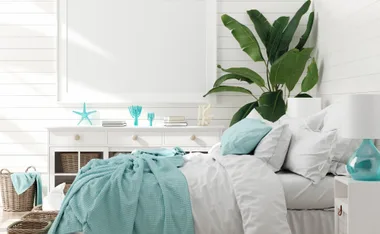The question of whether plastics can harm human health has been debated for years. Pamela Allardice has the latest.
According to chemical manufacturers, plastics industry associations and bodies like the US Food and Drug Administration (FDA), plastics are safe when used correctly. However, some experts are concerned by research which shows that certain compounds in plastics are potentially carcinogenic (cancer-causing) and also act as endocrine disruptors (substances with a chemical structure similar to oestrogen). The concern is that the human body thinks these fake oestrogens are the real thing, possibly triggering hormonal disruption and even genetic damage. While official agencies point out that much of this research has been conducted on animals, not humans, in view of trends like dropping sperm counts and the increasingly early onset of puberty in girls, it makes sense to reduce your exposure wherever possible.
Two to watch
Bisphenol-A (BPA) is used to make polycarbonate plastics clear and is found in a vast array of household goods, including reuseable water bottles, baby bottles and coatings inside food cans. Studies link BPA to reproductive problems and new research published in Endocrinology also shows that even extremely low levels of BPA (0.23 parts per trillion) impaired brain development in rats.
Phthalates are used to make polyvinyl chloride (PVC) products, like toys and raincoats, more pliable; they are also added to skin and haircare products. Phthalates have been shown to cause reproductive problems in animals; plus, there are connections between phthalates and premature births, endometriosis and abnormal testicle development in boys. The European Union (EU) banned phthalates in toys in 1999, Canada banned BPA in baby bottles this year and big companies like Mattel are removing phthalates from toys.
Reducing exposure
It’s not realistic to purge all plastic. It’s also important to realise that not all plastics are problematic: bread bags, yoghurt tubs and cereal-box liners are just a few examples of food-grade plastics with no known health hazards. Still, it makes sense to play it safe, so try these tips:
Use glass, stainless steel, ceramic, china or BPA- and phthalate-free plastic containers. Discard or recycle containers that become cloudy, warped or scratched.
Don’t microwave plastic unless the container has a “microwave safe” label.
Only use plastic for the purpose it is intended for, e.g. don’t microwave margarine tubs or reheat takeaway food containers.
Wash plastic in warm, soapy water instead of in the dishwasher.
Use cling wrap made from low-density polyethylene, rather than PVC. Do not allow wrap to come into contact with sugary or high-fat foods like cheese while cooking as compounds in plastic may leach out when heated. Or, use waxed paper instead.
Avoid toys made from PVC or vinyl.
Switch to natural, phthalate-free cosmetics and personal care products packed in post-consumer recycled plastic packaging.
Recycle: every day offers choices where you can cut plastic use or return it for reuse in fleece clothing, luggage, hoses, handbags, shoes and dozens of other products.











